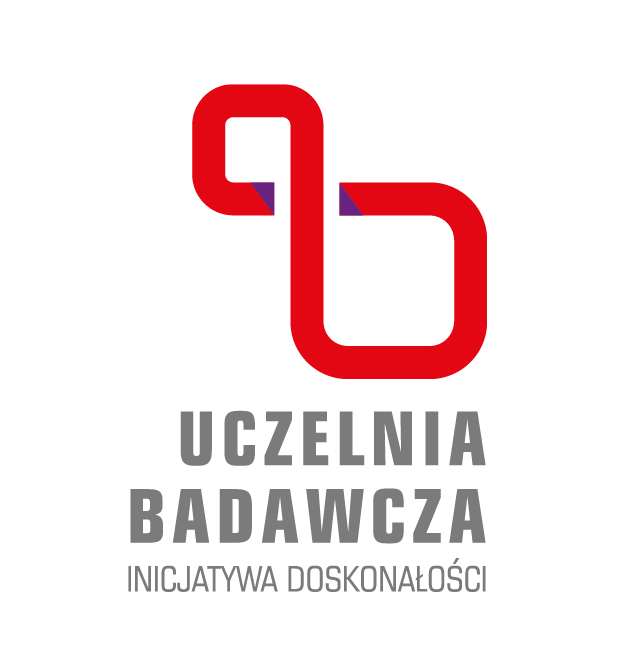Our employees were awarded internal grants in the YOUNG WUT II competition
The 6 winning projects in the Young WUT II competition were made by staff from CEZAMAT WUT. A total of 56 projects were awarded in the competition.
The authors of the projects selected for funding are: Marcin Drozd, Łucja Dybowska-Sarapuk, Michalina Kazek, Marcin Lelit, Sandra Lepak-Kuc and Paulina Trzaskowska.
Congratulations to all the awarded researchers!
Marcin Drozd PhD Eng. (Medical Diagnostics Department), A contactless and versatile module for cavitation-assisted, enzyme-free immmunodetection of serological biomarkers using bioconjugates of magneto-catalytic nanosorbents
Magnetic nanoparticles can find commercial application as nanosorbents for DNA or protein isolation. This is made possible by their easy separation in a magnetic field. Surface modification with a catalytic layer and antibodies also allows their use in ELISA-type diagnostic tests. These assays offer very good analytical performance, but their development and miniaturisation is currently facing limitations. The most important of these is the lack of dedicated tools for the dispersion of nanoparticles collected as a layer after magnetic separation. This process allows them to recover their original properties. Our aim will be to develop a versatile module, compatible with modern microfluidic systems, which will enable the dispersion of particles after magnetic separation so that they can be used as tracers in a bioanalytical assay for the detection of antibodies against H. pylori. The module will use an acoustic wave (ultrasound) and could become a versatile component of a diagnostic cassette reader. We believe that the research conducted has the potential to provide a useful solution for modern immunodiagnostics.
Łucja Dybowska-Sarapuk PhD Eng. (Department of Printed Electronics, Textronics and Assembly), Investigating the effect of the geometry of conductive graphene microarrays fabricated by jet printing on the growth and behaviour of neural cells
The project will use printed electronics techniques to print and test specially designed, biocompatible carbon (graphene) patterns that will stimulate neuronal cells to grow. The patterns will be conductive, so that electrical stimulation can additionally be applied. Neural cells are very difficult to motivate to grow, which is why we are still struggling with the problems of regenerating the optic nerve or a severed spinal cord. In the future, the research in the grant may lead to medical developments in the context of regenerating damaged nerves.
Michalina Kazek PhD (Department of Microbiology, Molecular Genetics and Genomics), Development of an organoid culture method for potential use in predicting the efficacy of chemotherapy and immunotherapy during lung cancer treatment
Tumour organoids can be obtained in two ways. They can be cultured from tumour-derived tissue taken directly from the patient (patient-derived tumour organoids – PDTOs) or they can be cultured using healthy tissues that are then subjected to genetic manipulation. Organoid models grown from cancer tumour cells taken individually from each patient can be used to predict how their tumour may respond to chemotherapy drugs, this is of great interest for the development of personalised medicine. Moreover, this technology lays the foundations for understanding the inter-individual heterogeneity of tumours among patients, which offers excellent research opportunities, including to study the spectrum of response and drug resistance in different molecular subtypes.
Marcin Lelit PhD Candidate (Intelligent Semiconductor Systems Department), Development of advanced integrated photonic elements for sensory applications
The aim of the project is to develop and test new, more sensitive and selective photonic sensors. This project is part of a broader research on the development of a silicon nitride photonic platform being carried out at the Warsaw University of Technology. In classical optical fibres, most of the energy is transferred inside the core. Our task is to develop so-called sub-wavelength optical fibres and other sub-wavelength photonic elements. In which a significant part of the energy propagates outside the core. This allows us to more easily influence the transmission properties of such an optical fibre, for example by immersing the chip in a solution containing the substance we would like to detect. The use of integrated photonics will allow us to build a compact chip, which in future could form the basis for, for example, faster, cheaper and more sensitive diagnostic tests.
Sandra Lepak-Kuc PhD Eng. (Department of Printed Electronics, Textronics and Assembly), Cytocompatible composite structures based on conductive carbon nanocomposites printed on eco-friendly substrates for the manufacture of biosensors
The aim of the project is to produce eco-friendly and fully recyclable composite layers dedicated to applications in printed electronics structures, for example in biosensors, primarily ECG electrodes. Testing of composite materials based on various conductive carbon nanocomposites and a matrix of eco-friendly materials such as chitosan or sodium alginate is planned. Tests will be carried out on the rheological parameters and printability of individual materials on the substrates tested. Cyto-compatibility tests of the structures obtained are planned. The subject matter of the project is in line with pro-ecological and sustainable development trends. The resulting structures could in future replace currently used, non-biodegradable, e.g. disposable ECG electrodes.
Paulina Trzaskowska PhD Eng. (Department of Medical Biotechnology), Rapid endothelialisation of magnetic and non-magnetic stainless steel using HUVEC cells loaded with superparamagnetic iron oxide nanoparticles
The project is concerned with investigating the effectiveness of a rapid endothelialisation process on the surface of magnetic and non-magnetic steel using HUVEC cells loaded with superparamagnetic nanoparticles (SPION), with a particular focus on the effect of the roughness achieved by different steel surface preparation methods. Endothelialisation of materials involves the introduction of endothelial cells, naturally occurring inside blood vessels, onto the surface. Achieving a stable and metabolically active endothelial layer on an implantable material, such as a stent, as quickly as possible is the way to achieve homeostasis in the implant area and stop the risk of thrombus formation or restenosis. In this project, magnetic and non-magnetic steel samples will be used and non-magnetic without any additional polymer coating, which is a very promising direction due to the clinical problems caused by coatings.
Source: https://badawcza.pw.edu.pl/Konkursy/Wyniki-konkursow/2024/Wyniki-konkursu-YOUNG-PW-II-aktualizacja
